Death Cloud Over Pompeii
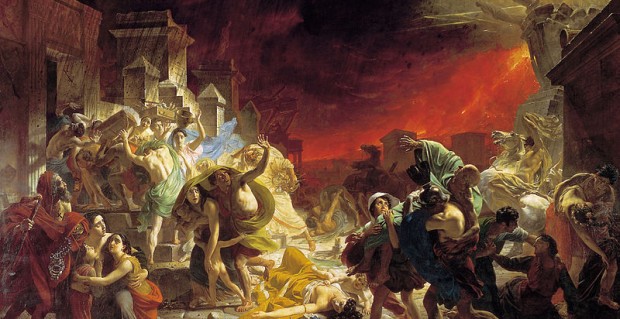
"The Last Day(s) of Pompeii" (Karl Briullov, 1827-33)
(Pompeii, AD 79)
On a pleasant warm day, a soft breeze soughing through the pines, we chugged on a local caboose through Campania from Sorrento to Pompeii.
Buried under a massive blanket of ash and pumice from the eruption of Vesuvius in AD79, only uncovered in 1750, ruins remain but ruins of startling length and breadth, including extant frescoes, streets and buildings, and corpses.
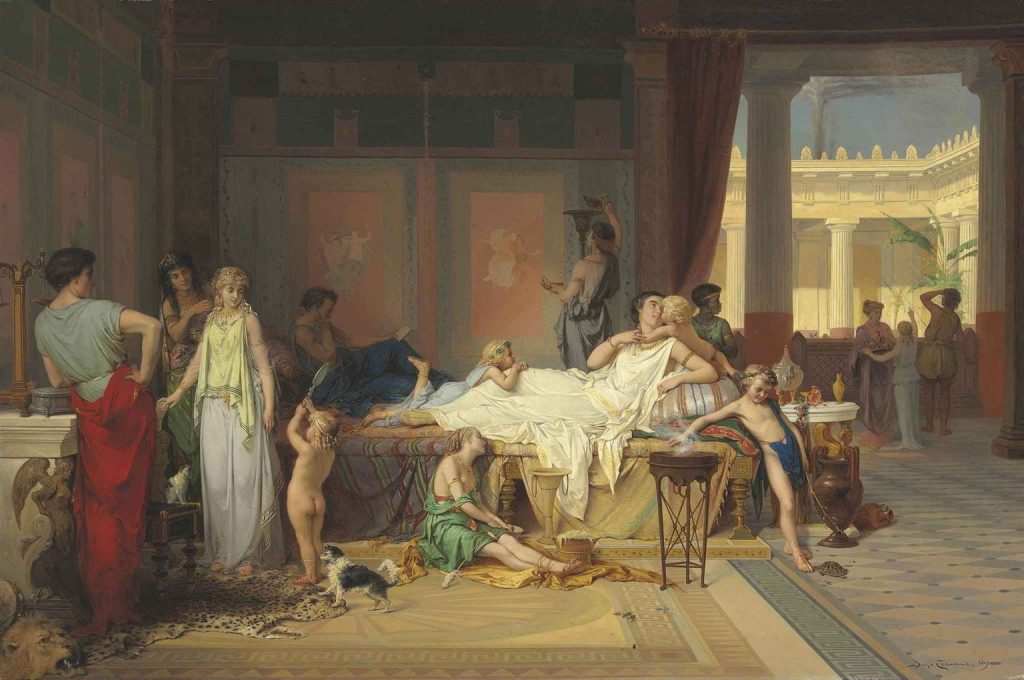
Gone in sixty minutes: Pierre Olivier Joseph Coomans (1816–1889) “The Last Hour of Pompeii – The House of the Poet” (1869)
Pliny the Younger was a 17 year old and described in a letter how some of his family’s land went up in smoke (initially in a cloud of vapours, shaped like a pine tree) along with his uncle, who died attempting to rescue town folk by boat. It is estimated (based upon the fact that town and gown were unearthed, largely intact) that most died not from heat or pyroclastic flows, but from a toxic gas cloud that drifted over the town and stayed, lethally, for 20 minutes or so.
Sir Edward George Earle Bulwer-Lytton, a kind of male and titled Marie Corelli, wrote his novel The Last Days of Pompeii (1834) based in part on the inspiration of Karl Briullov’s painting (see main picture).
Bulwer-Lytton’s purple prose matched the ripeness of the painting:
A “fire that shifted and wavered in its hues with every moment, now fiercely luminous, now of a dull and dying red, that again blazed terrifically forth with intolerable glare!”
“At that moment they felt the earth shake beneath their feet; the walls of the theatre trembled: and, beyond in the distance, they heard the crash of falling roofs; an instant more and the mountain-cloud seemed to roll towards them, dark and rapid, like a torrent; at the same time, it cast forth from its bosom a shower of ashes mixed with vast fragments of burning stone!”
“Over the crushing vines , – over the desolate streets, – over the amphitheatre itself, -far and wide, – with many a mighty splash in the agitated sea, – fell that awful shower!”
“Each turned to fly – each dashing, pressing, crushing, against the other. Trampling recklessly over the fallen-amidst groans, and oaths, and prayers, and sudden shrieks, the enormous crowd vomited itself forth through the numerous passages. Whither should they fly?”
“Some, anticipating a second earthquake, hastened to their homes to load themselves with their more costly goods, and escape while it was yet time; others, dreading the showers of ashes that now fell fast, torrent upon torrent, over the streets, rushed under the roofs of the nearest houses, or temples, or sheds – shelter of any kind – for protection from the terrors of the open air. But darker, and larger, and mightier, spread the cloud above them. It was a sudden and more ghastly Night rushing upon the realm of Noon!”
Suetonius wrote that the Emperor Titus (Titus Flāvius Caesar Vespasiānus Augustus) showed his mettle as one of the kinder Romans, in “these many great calamities he showed not merely the concern of an emperor, but even a father’s surpassing love, now offering consolation in edicts, and now lending aid so far as his means allowed. He chose commissioners by lot from among the ex-consuls for the relief of Campania; and the property of those who lost their lives by Vesuvius and had no heirs left alive he applied to the rebuilding of the buried cities.”
Even if we take Suetonius literally, we think the Emperor may have “lost a day” (diem perdidi) because most of what now endures at Pompeii, mainly if not exclusively, is due to the protection afforded by that blanket of ash.
A dark and stormy Noon….Room..?.
We were looking to be shocked by the desolation but we were scandalized by the rawness of some of the frescos.
Having walked about in the heat and dust for hours, we relaxed and lunched on a café deck under the trees and laughed at, no, exulted in, our first world problems.
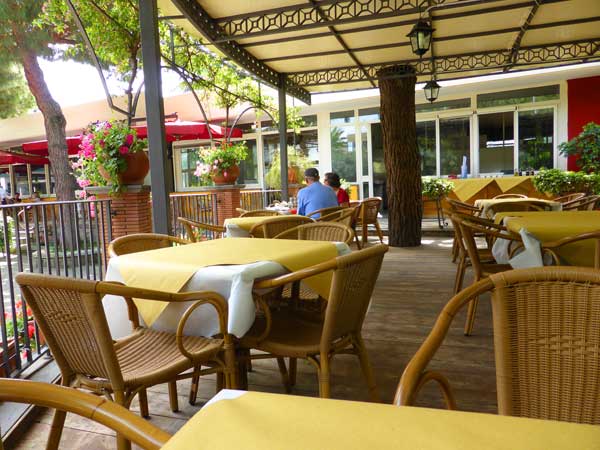
The skeletal remains of 2 men believed to have attempted fleeing the volcanic eruption of Vesuvius in 79AD have been discovered in Pompeii.

The partial skeletons were found during excavation of a villa on the outskirts of the city, near a stable with the remains of three harnessed horses was excavated in 2017. Pompeii officials said the two men apparently escaped the initial fall of ash, then succumbed to a volcanic blast. Massimo Osanna, Pompeii archaeological site director, said “The victims were probably looking for shelter in the cryptoporticus, in this underground space where they thought they were better protected. They died probably from thermal shock as demonstrated by the contracted limbs, feet, hands.” They were believed to be wearing wool, which may mean the October eruption date is correct rather than an alternate suggestion of August.]
Leave a comment...
While your email address is required to post a comment, it will NOT be published.

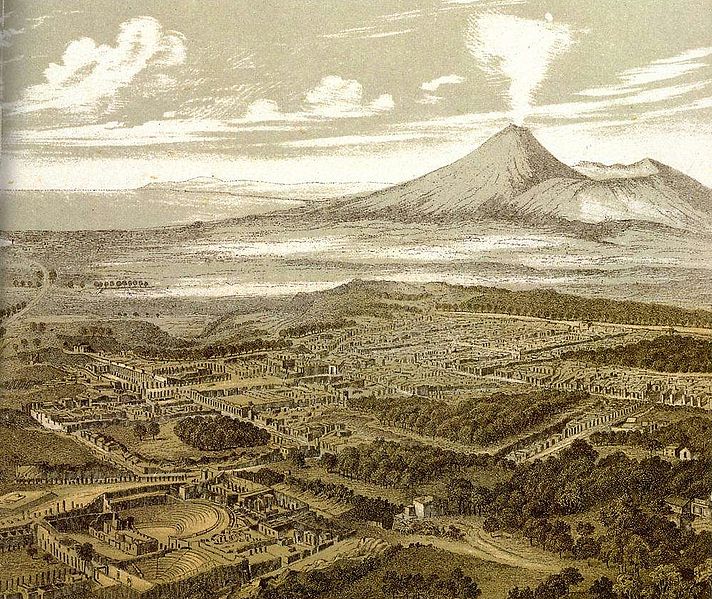
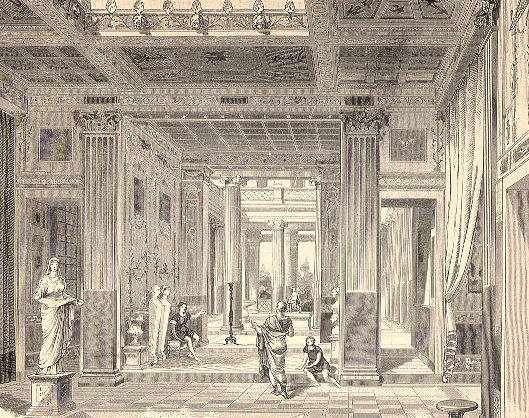
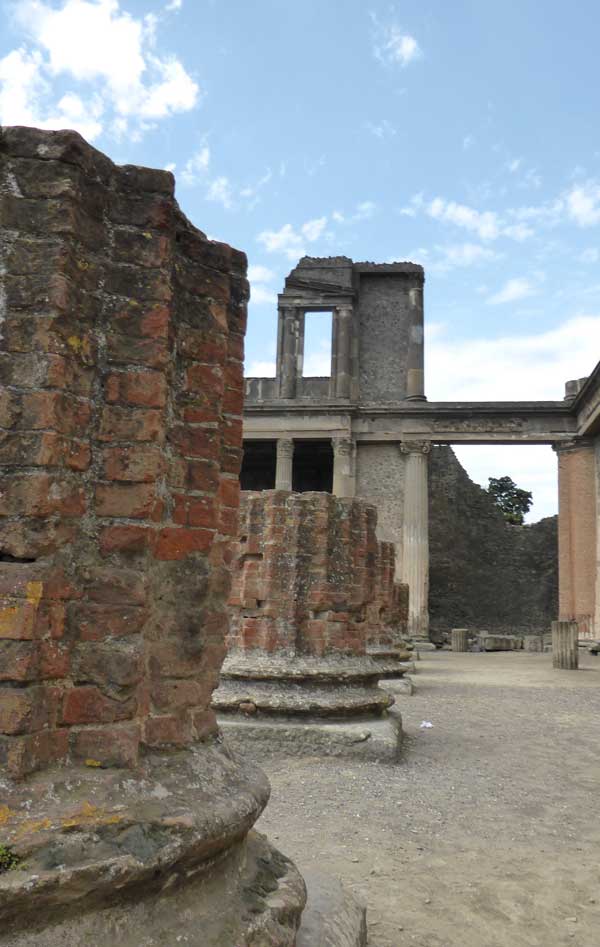

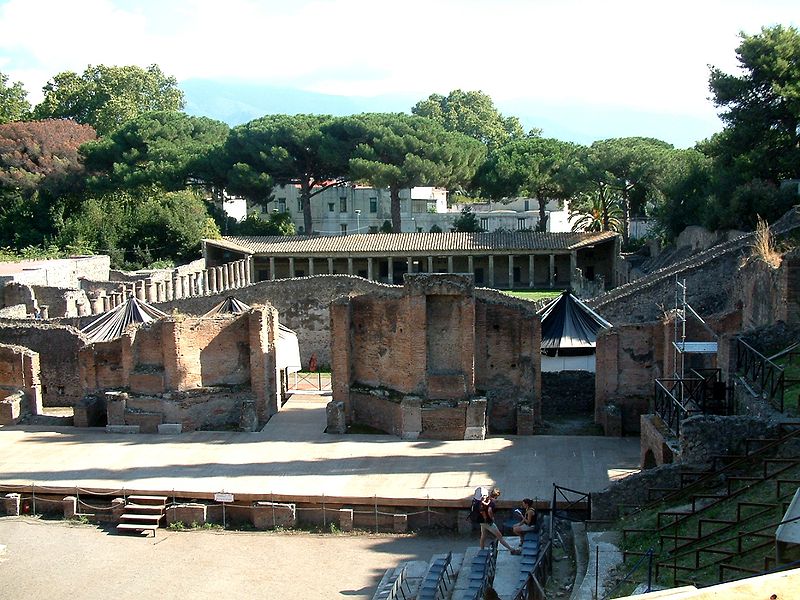
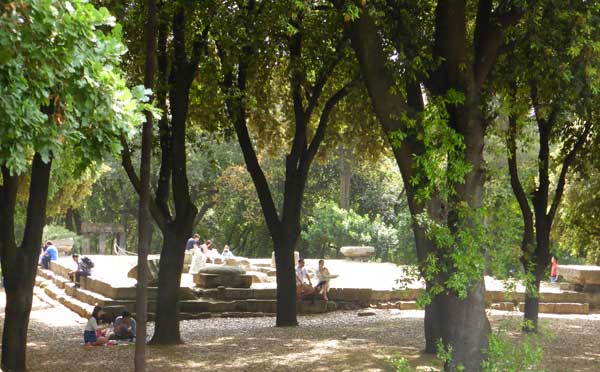
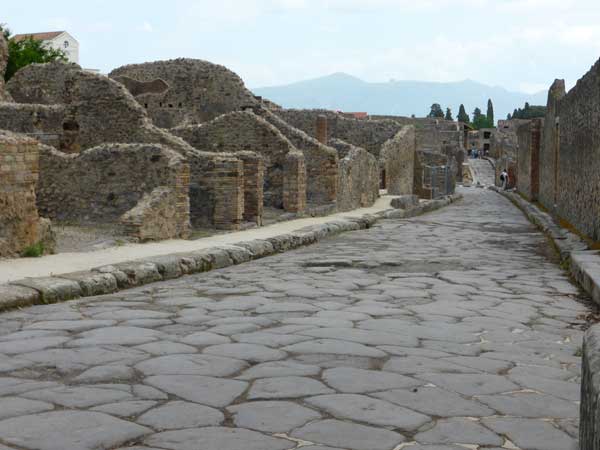
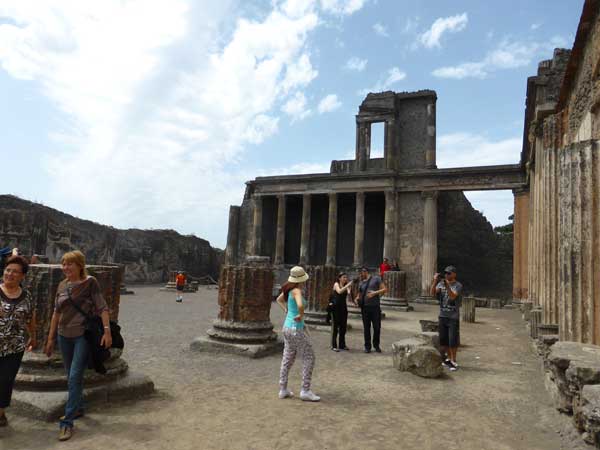
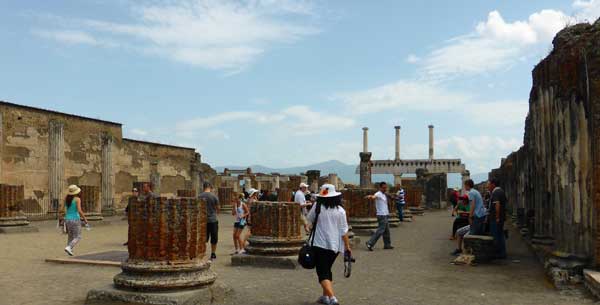
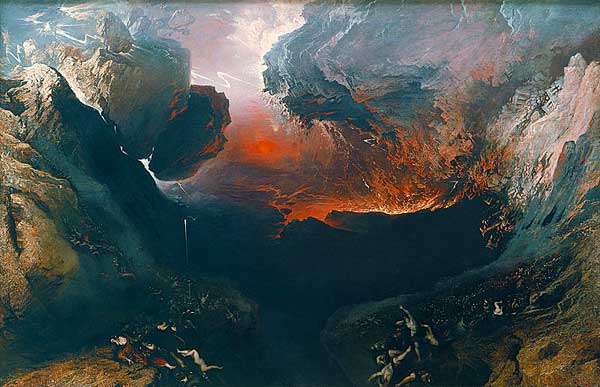
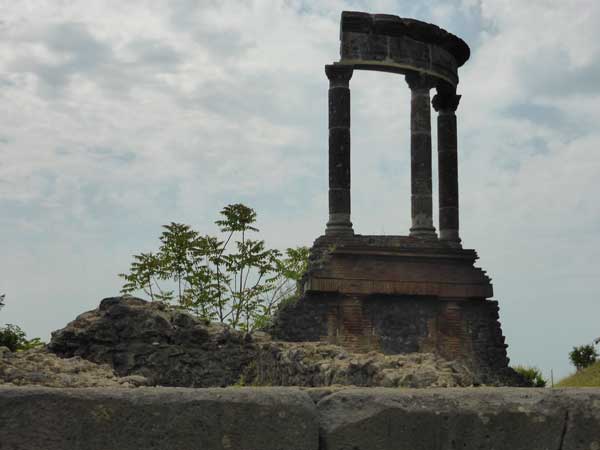
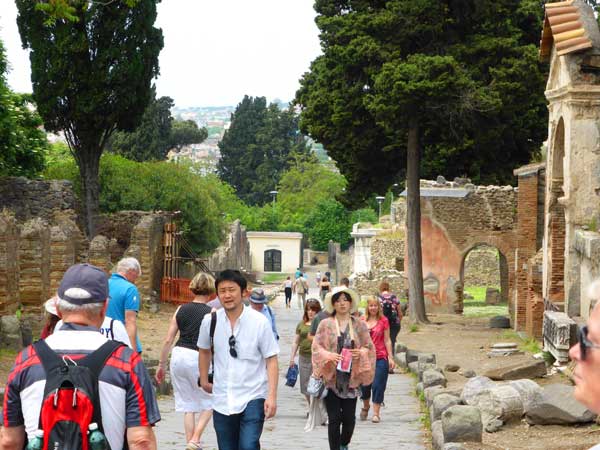
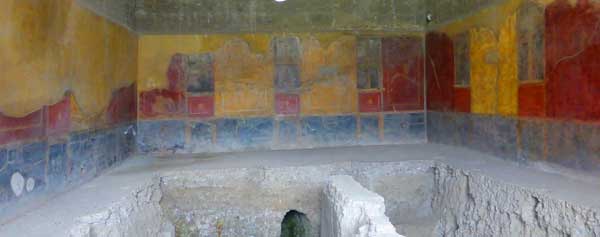
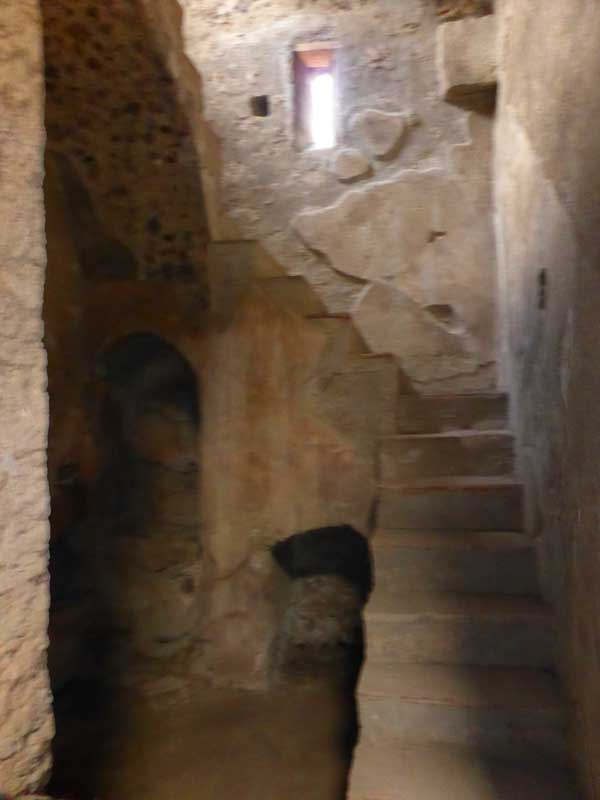

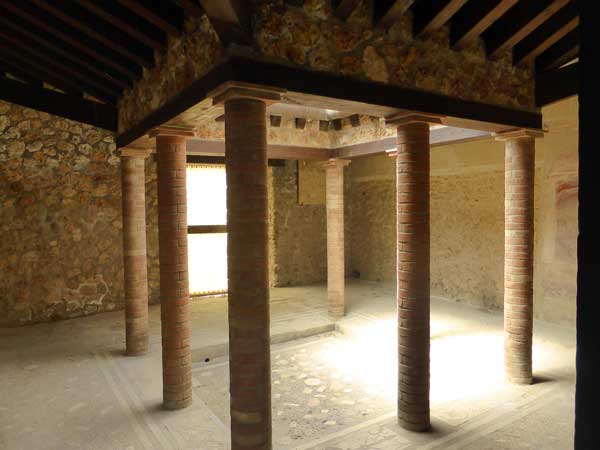
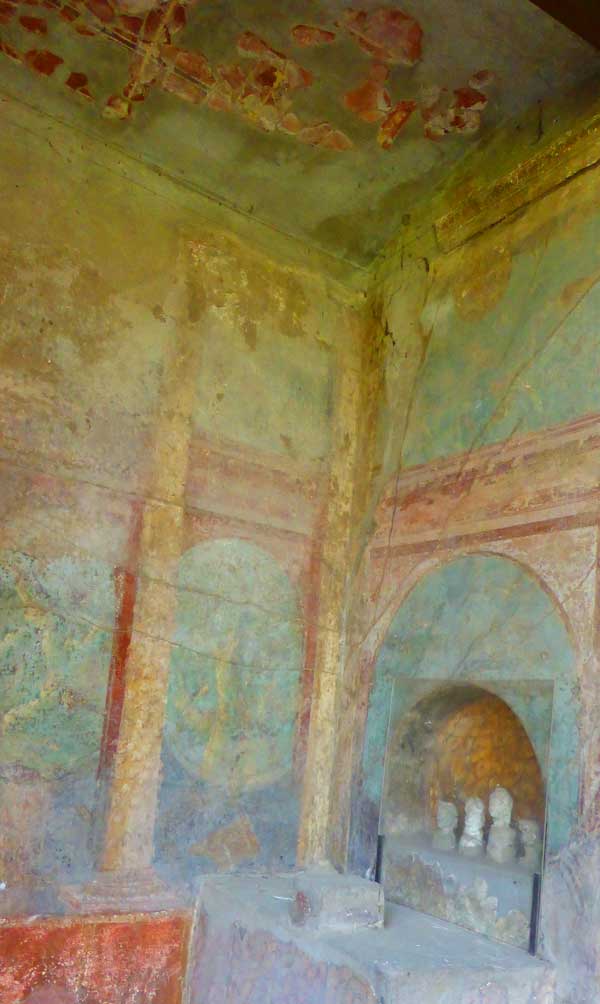

1 Comment